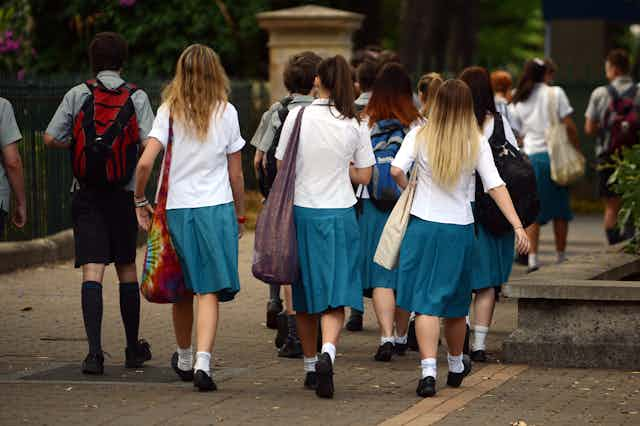This week a new report said there was a “curriculum problem” in Australia. Education consultancy group Learning First found the science curriculum lacked depth and breadth and had major problems with sequencing and clarity.
While the report said it was not “assigning blame directly to the curriculum”, it also noted since the Australian Curriculum was introduced more than a decade ago, “the performance of students in international […] science assessments has fallen by almost a whole year of schooling”.
Headlines followed about a “shockingly poor” curriculum and “long-term decline” in performance. At the same time, The Australian reported concerns the curriculum does not provide enough guidance to teachers.
While students’ scores on some international assessments have been falling, is it right to blame the curriculum for these trends?
What is the Australian Curriculum?
The Australian Curriculum is designed for students from the first year of schooling to Year 10.
It sets out:
the expectations for what all young Australians should be taught, regardless of where they live in Australia or their background.
It is made up of eight “learning areas”: English, mathematics, science, humanities and social sciences, the arts, technologies, health and physical education, and languages.
It has been described as a “map” of all the learning a teacher covers in each year for each particular subject.
Importantly, as education experts note, the curriculum was never meant to be prescriptive and nor should it be. Teachers should be able to tailor lessons to particular classes, situations and students.

Read more: Why do Australian states need a national curriculum, and do teachers even use it?
Who sets the curriculum?
It is designed by the Australian Curriculum, Assessment and Reporting Authority, in consultation with teachers, academics, parents, business, industry and community groups. It undergoes a review every six years and all updates are subject to ministerial approval.
Commonwealth and state and territory education ministers first approved the curriculum in 2009. It was designed to reflect the priorities of the 2008 Melbourne Declaration on the purposes and goals of Australian education. For example, “Australian schooling promotes equity and excellence”.
The curriculum has since been updated four times (as recently as April 2022 under the Morrison government) but remains a contested document. Common criticisms include that the curriculum is overcrowded, too complicated, too political and not inclusive enough.
Teacher shortages and lack of funding
Given the curriculum has to cover so much diverse content and serve so many purposes, criticism is all but inevitable.
While it is important to scrutinise the curriculum, it does not dictate how students learn or the conditions they learn in. So we should not let “curriculum wars” distract us from other issues hurting Australian schools and education.
Australia is in the midst of a serious teacher shortage. In New South Wales alone, 10,000 classes per day are not adequately staffed due to shortages. Teachers are plagued by excessive workloads, abuse and a lack of respect for the profession.
Public schools are also battling dire funding shortages. A report for the Australian Education Union recently found private schools were overfunded by about $800 million in 2023, while government schools were underfunded by $4.5 billion.
This is based on the Schooling Resource Standard, which outlines the minimum funding standard required for schools to respond adequately to their students’ needs.
In chronically underfunded schools with staffing shortages, it is no surprise students’ performance will be affected, regardless of teachers’ efforts – or whatever is in the curriculum.

What do schools actually need?
The curriculum should be revised, challenged and critiqued to ensure it is responsive to the ever-changing needs of Australian students. We should also hold high expectations for quality education in Australia.
But blaming the curriculum for underperformance is a distraction from bigger issues that impact student learning.
What schools really need to succeed is adequate funding and a stable and well-supported teaching workforce.
Read more: What is the National School Reform Agreement and what does it have to do with school funding?

